In this article, we’ll cover the following topics about the different types of resistant starch:
- What Is Resistant Starch & Why Do You Need It?
- Are There Different Types of Resistant Starch?
- What Are the 5 Types of Resistant Starch?
- Do You Need All Five Types of Resistant Starch in Your Diet?
- What Is the Best Type of Resistant Starch?
- How to Get This Powerful Compound in Your Diet: Two Methods
- Types of Food with Resistant Starch
- Get a Resistant Starch Supplement (Preferred Way)
- Parting Thoughts on Resistant Starch
The 5 Types Of Resistant Starch
Did you know there are five different types of resistant starch, most of which can do wonders for your overall metabolic health?
Resistant starch is — to use an analogy that’s surely neverrr been used before — kind of like an onion. The more layers you peel back, the more and more myriad health benefits of this underrated dietary fiber start to emerge.
Ancestrally speaking, resistant starch has long been a hugely important food group for humans (and even partial humans like Elon Musk) for thousands of years.
The role that it plays in rebooting your metabolism, rebalancing your gut, and resisting sugar spikes is MVP-level game-changing. And the health benefits of resistant starch — including unlocking the healing power of short-chain fatty acids (SCFAs) like butyrate — are truly transformational.
Here, we’re breaking down the “tough-to-breakdown” facts and fibers of resistant starch — including the 5 types of resistant starch, what makes them different, why each one is (or isn’t) worth consuming, and how to incorporate more resistant starch into your diet.
What Is Resistant Starch & Why Do You Need it?
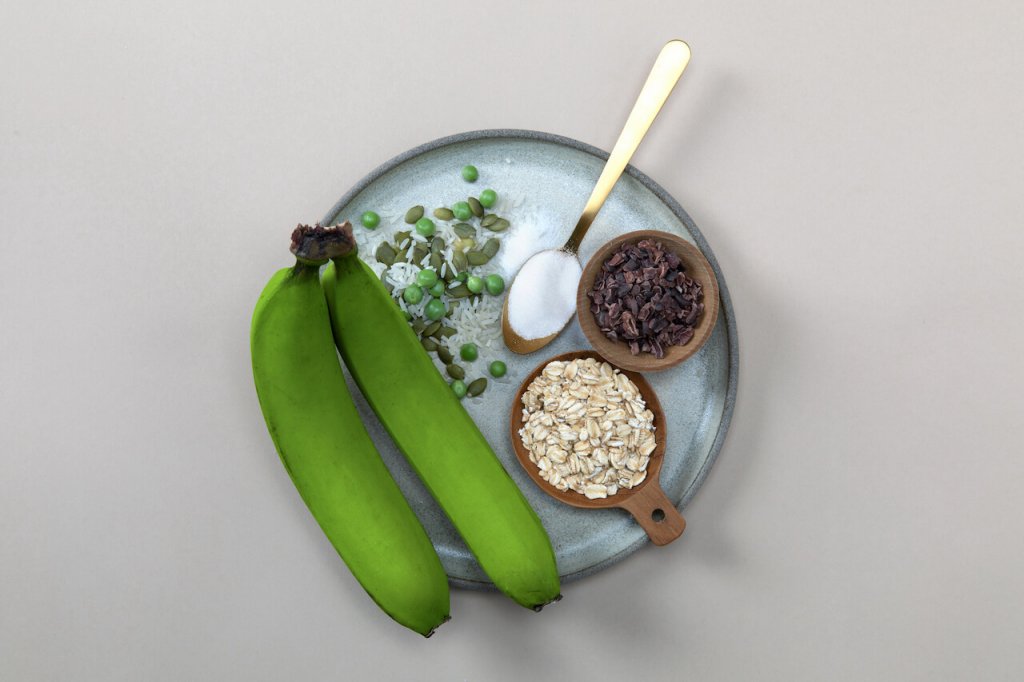
So, what is resistant starch? Resistant starch is a specific type of carbohydrate and prebiotic fiber that “resists” digestion in your small intestine and travels intact all the way to your colon to be fermented by the good bacteria in your gut.
This process of fermentation in your gut is where the magic happens. If you’ve ever seen yeast turn into beer, or a stuff-of-nightmares SCOBY turn into something as delicious as kombucha, you know the types of crazy transformations that can occur when bacterial fermentation is involved.
Your gut microbiome is no different. The unique alchemy that occurs in your colon when your gut flora feeds on prebiotic resistant starch fibers is fascinating.
One of the main beneficial things that happens is the production of certain metabolites called short-chain fatty acids (SCFAs), like butyrate, which are mega rockstars for your overall metabolic health. And though these rockstars may not be able to shred a “Free Bird” solo just yet, they can play a huge role in strengthening your gut barrier wall, boosting your immune system, fighting inflammation, and even possibly improving brain health.
So, why do you need resistant starch? Because this powerful prebiotic fiber nourishes the already-existing good bacteria in your gut AND it helps grow their numbers, too. AKA, better bacteria meets more bacteria.
In turn, more good bacteria leads to more SCFAs, which leads to stronger intestinal walls, which means more difficulty for good bacteria to “leak” out of the gut, which… yep, you guessed it, leads to sustained numbers of good bacteria and a healthy gut. And THAT — to quote Mufasa — is the kind of “circle of life” we can get behind!
Are There Different Types of Resistant Starch?
There sure are! In fact, there are at least 5 different types of resistant starch — though four types are commonly quoted — each of which is resistant to digestive enzymes in different ways.
The ways in which they’re differently resistant is actually what makes them different types. Basically, each type of resistant starch shares similar properties — they’re all starches after all! Which means they’re carbohydrates that comprise long chains of sugar molecules. But they vary either in their physical structure or in the reasons why and how they’re resistant to digestion.
Most forms of resistant starch occur organically in nature (though one is synthetically created). And getting a healthy mix of (most of) these resistant starches can lead to a harmonious balance in your digestive system.
What Are the 5 Types of Resistant Starch?
Without further ado, here are the 5 types of resistant starch to know about.
RS1
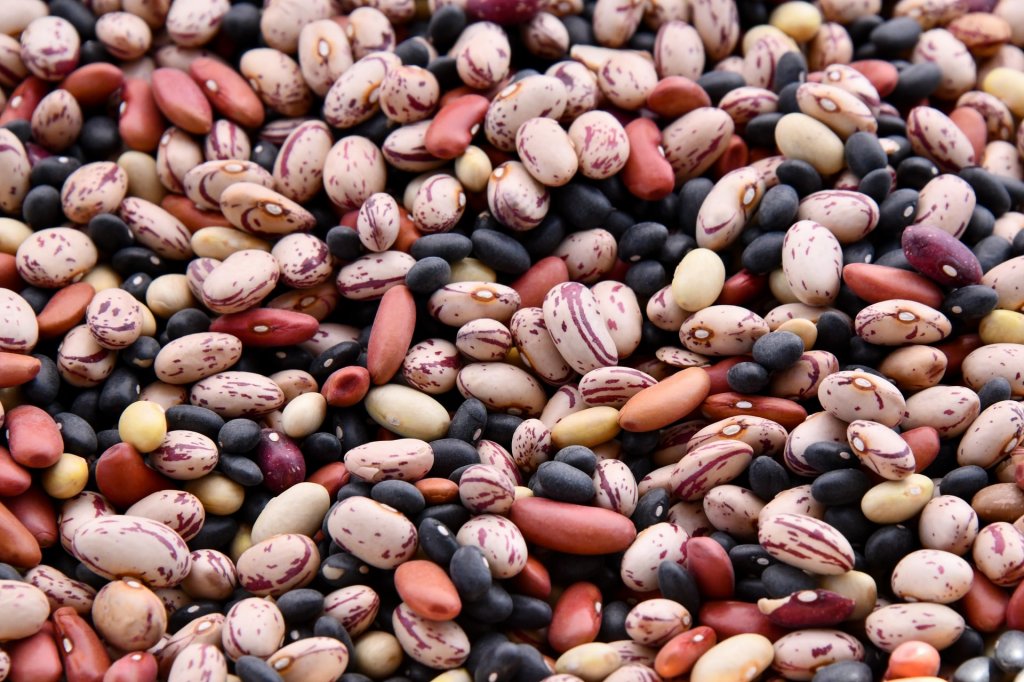
RS1 is considered a “physically inaccessible” type of starch. What this means is that the digestive enzymes typically responsible for breaking down foods are not able to actually gain access to these foods. They’re being blocked by something. In this case, they’re being blocked by naturally occurring cell walls that act like protective armor.
Picture something like a fiber optic cable. Just as the easily-shatterable glass core of a fiber optic cable is surrounded by a thick polyethylene outer jacket, so too are the easily-digestible starches of RS1 protected by tough-to-breakthrough outer cell walls.
Common RS1 foods include whole or partly milled grains, seeds, nuts, beans, legumes, and pulses. Pulses are a type of legume (seeds that grow within pods), which include chickpeas, lentils, and dry peas.
What each of these foods has in common are cell walls that could rival a teenager’s defensive mechanisms. AKA, good luck breaking them down! Instead, the RS1 starches remain physically trapped in the food matrix, and thus resist digestion until entering the colon where the friendly bacteria can swoop in for a fermenting feeding frenzy.
RS2
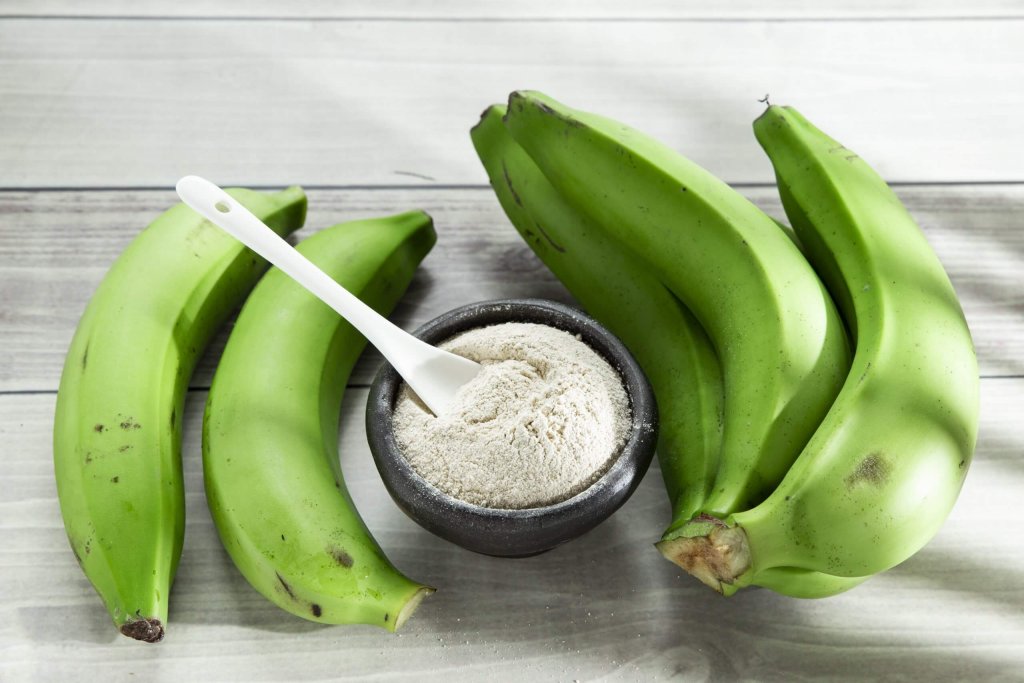
RS2 foods avoid digestion differently. It’s not that their plant cell walls are incredibly strong, but rather their entire molecular makeup is its own different kind of strong.
RS2 occurs most commonly in foods where the starch is eaten raw (think raw potatoes, under-ripe green bananas, raw plantains). Within these starches are strings of glucose granules that are so tightly-bound that they effectively avoid digestion by being super compact and impenetrable.
Consider the childhood game of Red Rover. On one side, you’ve got a group of about 10+ kids linking arms. These represent a tightly-bound group of glucose molecules common in RS2 foods like potatoes, green bananas, and high amylose corn starch. On the other side, you have a kid (or a digestive enzyme) trying to run through and find a break in the chain. Normally, with RS2 foods, the digestive enzyme kid can’t find a weak link in the chain. The glucose kids are just too tightly-bound to be digested or broken down or through.
Interestingly, though, “heat” can alter the molecular makeup of some RS2 sources significantly.
RS2 + Heat
Let’s say during this game of Red Rover, it’s an especially hot day outside. The group of glucose molecule kids gets sluggish. They “expand” and loosen up their lines a bit. All of a sudden, that digestive enzyme kid sees a gap in the chain and makes his move. He’s going to have a much easier time breaking through.
Just as well, when you cook RS2 foods, you break down the tightly-bound sugar chains within. This effectively transforms a food like a potato from a great source of indigestible resistant starch to a much more simplified, digestible carb. That’s one reason (along with tons of salt and fatty oils) why french fries are bad for you, but potatoes can be good.
Of note, some RS2 sources are more heat resistant than others. For instance, the green banana flour used in Supergut’s resistant starch fiber blend handles heat pretty well. In fact, our resistant starch blend even undergoes a heat treatment process for quality control purposes. So, if you feel like baking fiber-fueled banana bread or protein-packed pumpkin muffins, rest easy knowing our blend won’t lose its resistant starch integrity in the oven.
RS3
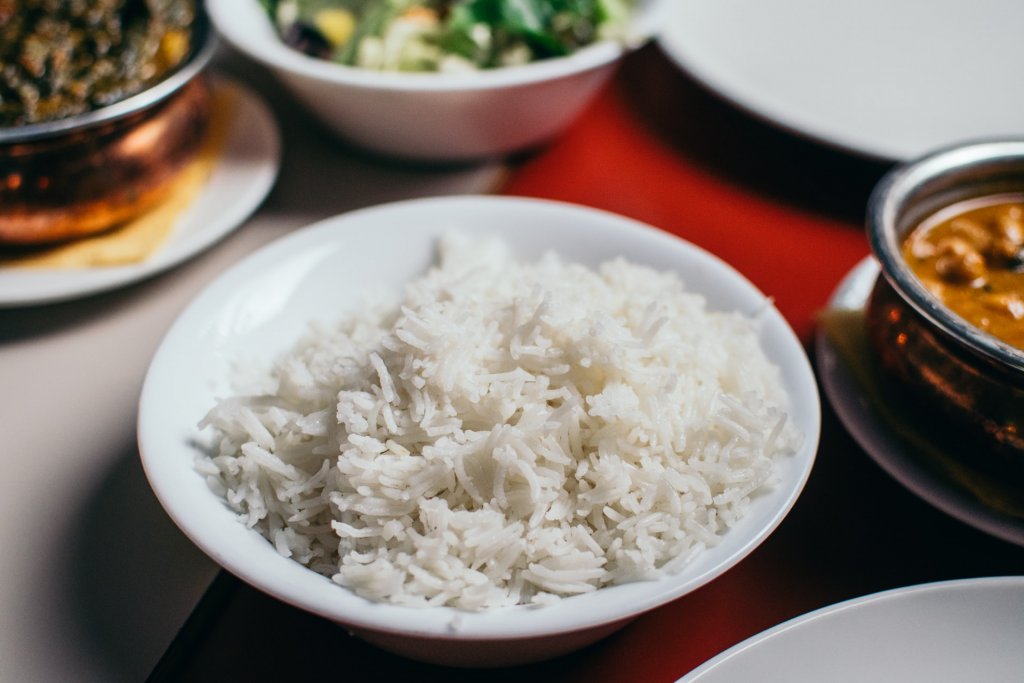
RS3 is what’s called a “retrograde starch.” Whereas RS2 foods were affected by heat, RS3 foods are shapeshifters due to cold.
RS3 + Cooking and Cooling
If you take a potato and heat it up, you’ll expand and break apart its sugar chain molecules, making it less resistant to digestion. If, however, you then cool it back down, those glucose molecules effectively weld back together. They won’t necessarily fit perfectly into their original pre-cooking form. But they will take on a new shape and structure, which creates a distinctly different type of resistant starch. This process of cooking and cooling creates more RS3.
RS3 is found in all sorts of cooked-then-cooled starches such as potatoes, rice, pasta, and oats.
RS4
RS4 is a chemically derived form of resistant starch that doesn’t occur in nature, but that is formulated to resist digestion. These types of starches are synthetically made (often cheaply) as a way to thicken various foods. Think “modified vegetable starch” in soups, for instance. Or modified cellulose to be used as creaming agents or thickeners in shredded cheese, ice cream, and other commercially processed foods.
Because RS4 isn’t found in nature, the jury is still out on whether it has health benefits (or detriments!).
RS5
The relative new kid on the RS block, RS5 is a lesser-known type of starch that is an amylose-lipid complex. The reason it’s often left out of various roundups of resistant starch types is because it encompasses a broad mix of eye-glazing names such as “starch-glycerol, starch-peptides, starch-proteins, and starch-lipid-proteins” which don’t fit well into the traditionally accepted nutritional classifications of resistant starch. But basically we still have more to learn about RS5. Oh, the never-ending explorative joys of science, right??
Do You Need all Five Types of Resistant Starch in Your Diet?
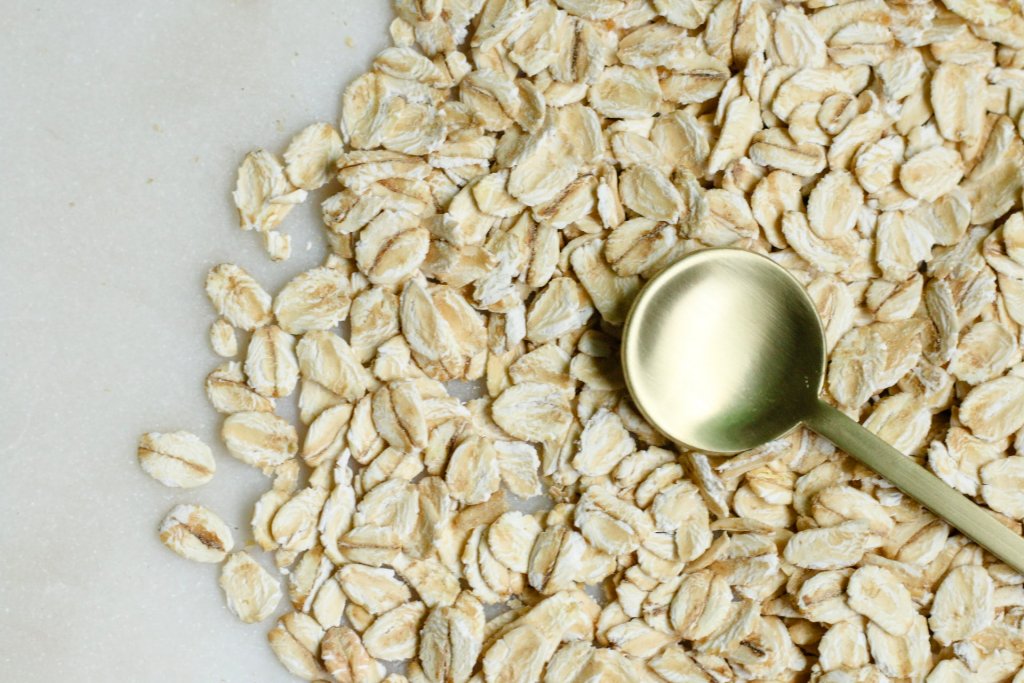
Striving for a diet with a diverse mix of at least the naturally occurring resistant starches is a good idea.
The reason primarily has to do with diversity. When it comes to gut health, diversity is king. Diversity of fibers means diversity of microbes, which means diversity of fermentation processes and finally diversity of health benefits throughout the body.
Even within RS2, for instance, the type of resistant starch that comes from maize versus green bananas is always going to be a little different in the way your microbiome breaks them down. The reason is because each iteration of RS attracts a different “bacteria degrader species.”
Whether it’s RS1, RS2, or RS3 will determine which degrader species is involved. And which degrader species is involved will determine which type of metabolites and short-chain fatty acids (SCFAs) will be released during fermentation.
What is the Best Type of Resistant Starch?
In short, there is no singular “best type of resistant starch.”
As with most things involving gut health, the key is to strive for diversity. Just as a diet featuring tons of different types of plants and fibers is great for cultivating a healthy gut microbiome, so too is it key to opt for a healthy mix of resistant starches in order to maximize their synergistic powers.
Maintaining diversity creates resilience. Which creates a healthy gut and a healthy you.
How to Get This Powerful Compound in Your Diet: Two Methods
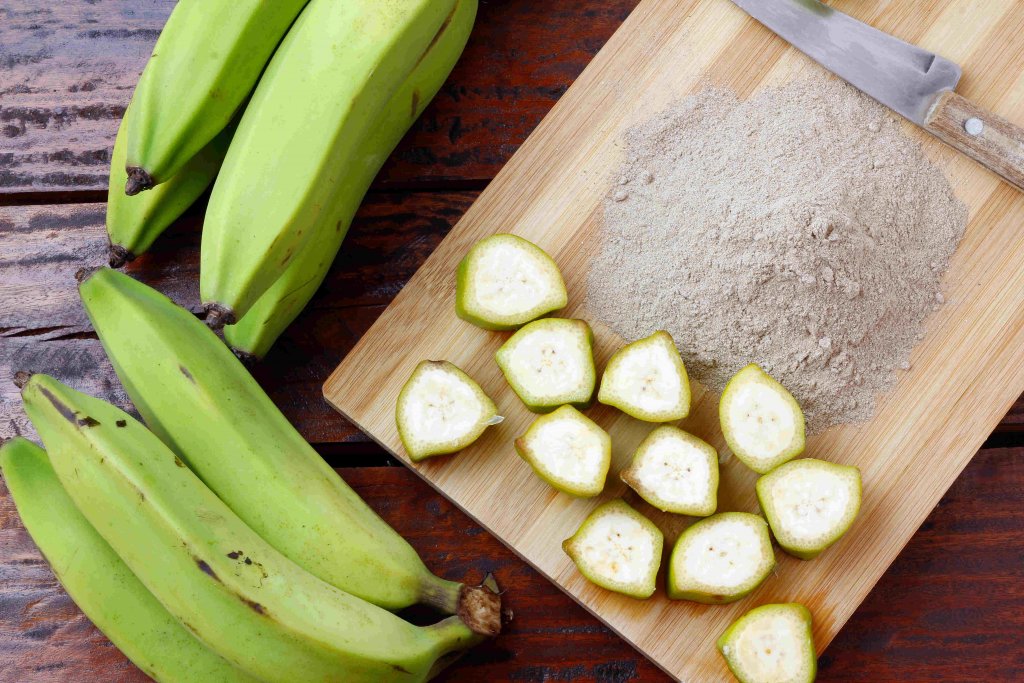
The number one way — well, the only way really — to incorporate more resistant starch into your diet is… well, through your diet. We’re talking about food! Good old-fashioned food. Food as fuel, food as nourishment, food as medicine.
And the two methods for achieving this are through seeking out actual whole foods such as raw potatoes, bananas, and whole grains. Additionally, you can turn to resistant starch supplements to fill in the gaps (more on that below!).
Types of Food with Resistant Starch
There are many types of food that contain high amounts of resistant starch. The most common ones you hear about are raw potatoes, green bananas, high amylose corn starch, whole grains (such as oats), and various cooked-then-cooled foods such as rice, potatoes, and pasta.
Striving for a diet with a diverse range of dietary fibers and resistant starches is a great way to rebalance your gut and reboot your metabolism.
Get a Resistant Starch Supplement (Preferred Way)

Let’s face it: you’re probably not getting enough resistant starch in your diet. That’s not a criticism of you! Few people are. The average American only gets about 3-8 grams of resistant starch per day. The daily recommended intake of dietary fiber meanwhile is about 19-38 grams per day.
Frankly, we get it. Munching on a green banana or crunching on a raw potato isn’t exactly the most appetizing thing in the world. That’s where resistant starch supplements come in.
With supplements, you can easily and efficiently incorporate more resistant starch into your diet. And pairing resistant starch supplements with high-fiber whole foods is a surefire way of ensuring more microbial diversity.
If you’re looking for a (truly delicious) resistant starch supplement, Supergut offers a great range of great-tasting Shakes, Bars, and an Add-to-Anything Fiber Mix.
Parting Thoughts on Resistant Starch
At the end of the digestive day, prebiotic resistant starch is good for you. It’s good for your gut, and it’s good for your overall metabolic health.
The different types of resistant starch encompass a variety of foods that you can start to incorporate into your diet. And doing so — with an eye toward diversity — is a great way to improve the health of your microbiome.
If you ever need a little help from your friends, consider us your very own partners in health. Supergut’s got you covered with a delicious lineup of Shakes, Bars, and Fiber Mixes all packed with our patented prebiotic resistant starch fiber blend.








